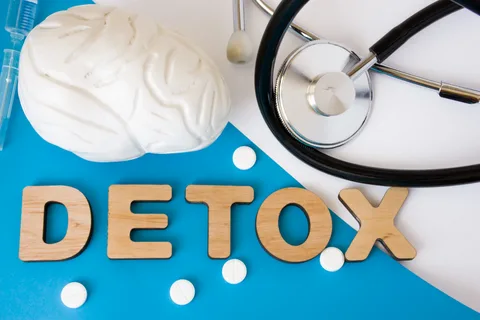Blog
cristina

Brain Detox
By Bryce Wylde-Health Expert

We’re increasingly surrounded by invisible dangers our ancestors could not have dreamed of. In fact, until recently most of us hardly dreamed of them ourselves. But what we once suspected or heard rumored, we now know for certain: our air, our water, our food and many of the everyday objects we employ are a constant threat to our health and safety. A few decades ago, you rarely heard the word “toxin”. If something could poison you, you called it “poison”. Everyone knew what poisons were. They were the products labeled with a skull and crossbones: the caustic lye in the garage, the bleach in the laundry room, the bottle of iodine in the medicine cabinet and maybe even DDT pesticide and the once frequently discussed topic of acid rain (why is that no longer a thing?). Today, toxins are becoming famous in their own right hitting the six o’clock news on a regular basis: BPA in plastics, radiation from phone cell towers, radon gas seeping into your basement, pharmaceuticals and radionuclides in our drinking water just to name a few.

It’s no wonder that late-night infomercials deliver urgent, low-budget warnings about toxins and then offer us the miracle of detoxification. Most of us at least nod in recognition when toxins are mentioned and now most are quite familiar with the concept of detoxification being good for us. “Detox” as a natural health practitioner may refer to it, is the latest fad that even top celebrities are some of the biggest advocates of. It’s a painless process normally requiring little more than following the product directions on a bottle and eating, say, beet and carrot juice, for a month. That is a tremendous value at $299.99 plus local taxes where applicable. Actually, most of those don’t work…sorry.
We’ve all splashed ourselves a few times with a corrosive cleaner while cleaning the toilet, and some may even share their neighbourhood with a nuclear reactor, while still others drink municipal tap water all our lives, and yet somehow you’re still here to read this article. So, why do we need to consider detoxification? At the end of the day it is easy for the topic of toxins and detoxification to sound like new-age vagary. The concept is often elevated to news status by a hungry media; bowel flushes and lymph cleanses sure seem like the brain hatchlings of tree-hugging vegans and fringe health fanatics. In the face of a flood of this information, what are we supposed to do, put on a radiation suit when someone walks into the office eating a non-organic apple? The idea is not to panic or become fanatical. The best reason I can give you to consider a valid detoxification prescribed by a clinician who knows what they’re talking about (or at the very least a healthfood store clerk with some credentials) is based on what I refer to as “the human health threshold.” It’s simple. Although you’ll be happy to learn that most of us detoxify ever second of every day – and quite well on our own, thanks to our liver, kidneys, and bowels – some of us however don’t do so well. What is the unique difference? It’s combination of our individual, personal threshold.
Let me explain...
My experience with my patients has brought home to me that human health consists of an interplay of variables that include our genetics, our environment, our toxic load, our stress accumulation, our nutrition and emotional state, our exposure to microbes, our level of fitness, and a plethora of other factors. Each of us has an individual ability to cope with these factors. The limit of that ability – the point at which, if we exceed it, our health fails – is our human health threshold.

If we imagine a thermometer that registers the sum of all these interacting factors, our health threshold is the boiling point. By analogy then, like water, think of the human health threshold as 100 degrees Celsius. But the capacity for managing the various influences that affect our health is different for each of us because for some, stress, for example, accounts for 20 degrees, where for others, stress may account for 50 degrees at any given time. For some, diet may account for 30 degrees, and for others, it may be 70 degrees due to a genetic predisposition for poor carbohydrate metabolism. Nonetheless, when we are pushed past our individual thresholds, we are no more able to remain healthy than water can prevent itself from boiling when it’s heated to the boiling point. Today, many of us run so dangerously close to that threshold that we increase our probability of an early decline in the functioning of our bodies. We may be living longer than the generations who came before us, but we are living longer with chronic disease and discomfort. We are becoming “toxic.” Our health “temperature” constantly rises with our increasing levels of stress, poor diet, environmental burdens, and our exposure to toxins, just as the mercury in a thermometer slides up in response to an increase in temperature.
Since the Second World War, an estimated 85,000 synthetic chemicals have been registered in North America.

Toxicological screening data are available for just 7 percent of these chemicals. This means that testing on humans can detect only one in 14 chemicals. Some studies on toxins found in the umbilical cord blood of 10 newborns discovered 200 trace chemicals. Translation: we actually may be looking at 2,800 synthetic chemicals in one small body before it’s even born. Right from the get-go, we’re born into a toxic world already full of toxins. Shampoo, shaving cream, lip gloss, hand soap, dish detergents, laundry detergents, moisturizing creams, perfumes, air fresheners, cosmetics and deodorants – in our heart of hearts, we know these useful little additions to our daily lives start out as nasty raw materials, but we just don’t like to think about it. Dyes and pigments, rubber, the fabrics that make up our clothing, the paint on our houses, the tube of glue in the kitchen drawer – we know they started out in places with chimneys belching sulphur oxides, nitrogen oxides, volatile organic compounds, particulate matter, carbon monoxide, sulphuric acid, carbon dioxide and dioxins. We know – but we don’t want to know. But what is the organ most vulnerable to all these toxins? Your brain!
Cerebrospinal fluid is a clear liquid surrounding your brain and spinal cord
It moves through a series of channels that surround blood vessels managed by specialized cells in your brain called glial cells. These cells don’t “think”, they detoxify. This is called the glymphatic system. If exposure to toxins accumulate faster than the glymphatic system can rid of them, it damages and even kills brain cells.
The best way to manage neuron depleting toxins – like solvents, drugs, radiation, paints, industrial chemicals, and heavy metals – if possible is to avoid them in the first place.
Lifespan is the length of time you’ll spend on this earth regardless of how healthy you’ll be. And, we all want to live longer – we all want to age slower. We all want to live as healthy a life as possible. This is known as health span – your longest life spent in optimal health. Brainspan, however, is living your longest life spent in optimal health with the best brain possible. One way to optimize brainspan is to better manage glymphatics and brain detoxification
Detoxification, or “detox”

refers to your body’s ability to neutralize the harmful effects of synthetic chemicals in the environment, metabolize prescription medication, or even manage cellular debris as a consequence day-to-day life.
Detoxification is like dealing with the trash in your home. The first step is usually to discard it in the waste bin under your sink. The second step is to store it in your garage until collection day. Step three is to place it curbside for the city garbage truck to come by for the “waste disposal technicians” to pick up.
Phase I of our body’s detoxification process is the first line of defense against all environmental toxins, including pesticides, herbicides, pollutants, solvents, pharmaceuticals and even processing certain natural medicines and supplements. In this phase, specific enzymes our liver makes works to “take the garbage to the garage” for our body. Even naturally occurring chemicals that our own body creates – such as waste products and end metabolites as a result of hormone formation – get detoxified in Phase 1.
A key point is reached between Phase I and II
Where harmful free radicals are formed as a result of Phase I activity but are transformed to harmless water by antioxidants ingested in our diet. It is important to note that increased Phase I detoxification without increased detoxification in Phase II can lead to the formation of intermediates that may be more toxic than the original toxin! To use a trash example, you might be great at putting the garbage in the garage, but if you regularly forget to put the trash at the curb, you’ll soon be facing a major contamination issue in your home.
Phase II detoxification follows phase I
Toxins are transformed into water-soluble substances that the body is then able to eliminate through the urine or in the feces through the bile. Phase II enzymes of detoxification are involved in what is known as the conjugation or “binding” of toxins, which makes them more extractable from your body.
Being an optimal detoxifier requires a great glymphatic system in your brain and a balance in Phase I and II liver detox systems. More often than not, detox pathways need help. In this class, you’ll learn how to support detox and avoid toxin exposure.
Science has discovered that one of the advantages centenarians have is that they are super detoxifiers. A family of genes known as the glutathione s-transferase family or GST family of genes are responsible for making glutathione the antioxidant that is paramount in your ability to detoxify.
The GST family detoxifies many environmental toxins. The list is long and includes volatile solvents like glues, aerosol, paints, industrial solvents, gasoline, as well as cleaning fluids, herbicides, fungicides, and heavy metals such as mercury, cadmium and lead. The GST family is also responsible for detoxifying endogenous toxins which are produced by the body as a response to stress, exercise, hormone metabolism and a variety of health disorders just to name a few.
Some of us detoxify much more ineffectively than others. Where you can’t change your DNA, the great news is that you can modify your genetic expression. This means there are things you can do to support detoxification once you understand your DNA. A healthier tomorrow starts with a DNA test today and you can learn more about this at www.thednacompany.com
Unless you want to be the filter, put filter technologies to work. The number one way to reduce toxic exposures in your home is to have a good water filter. City water may be “safe” but it isn’t PURE. Throughout North America there is a relaxing of regulations on pesticides and industrial toxins that run off into the water supply. Sadly, this has lead to a huge rise in exposure of all kinds of toxic chemicals that harm your brain. Reverse osmosis is the best water filtration system removing everything and leaving virtually nothing behind but pure H2O.
Filter the air you breathe. Furniture is loaded with flame retardants, household items such as shower curtains emit VOCs, and plastics leach phthalates. Replacing all of these items for Chemical free replacements may not be practical. But, a HEPA filter can significantly minimize the toxic load on your brain from these common household items. If you can afford it, also consider a HEPA vacuum. Just like with water, you can be the filter or you can choose to have technology do it for you.
Reduce your exposure to mercury. If you have silver fillings in your mouth, remove them! These are amalgams and are made up of 25% silver, 25-35% blend of copper, zinc and tin, and shockingly 40-50% mercury! When you grind your teeth in the process chewing your food, mercury is being released into your system.
A less common way you get exposed to mercury is breathing mercury vapor. This can happen when mercury is released from a container, or from a product or device containing mercury that breaks. If the mercury is not immediately contained or cleaned up, it can evaporate, becoming an invisible, odorless, incredibly toxic vapor.
The good news is that a potent antioxidant naturally found in your liver called glutathione helps to clear brain toxic mercury. By supplementing with Alpha Lipoic Acid, N-Acetyl Cysteine, and Selenium you can help your body make more glutathione to deal with mercury as well as a whole host of other toxins.
As I’ve mentioned above, detox is as much about avoiding toxins in the first place.
Organics is a $50 Billon industry. We are spending up to 60% more for what we believe is healthier and less toxic. And for good reason. Buying organic in many cases will minimize the brain toxic effects of Pesticides, Fertilizers, Hormones, Antibiotics, Dyes, Solvents, Irradiation, and GMO’s.
Not to mention, organic farming is more sustainable for the environment. Much fewer pesticides are released into the environment. Some of those pesticides can taint local water sources or harm local aquatic wildlife. Studies also show that organic farms produce less waste and use less energy.

But here’s the deal… not all organic is equal. Look at your labels. 100% certified Organic indicates the product contains 100 percent organic ingredients. The use of the certified Organic indicates the product contains a minimum of 95 percent organic ingredients and up to 5 percent of ingredients may be nonorganic agricultural products. The use of the term certified “Natural” indicates the product likely doesn’t contain artificial ingredients or added color but the product may contain antibiotics, pesticides, or other similar chemicals. This is basically a bogus and meaningless claim.
Eating lots of fruits and veggies daily will support your brain and help it detoxify. When it comes to protecting your brain from the toxins found in some non-organics, here is a list that clarifies what you really should buy organic and where you can save some money on conventional produce.
Strawberries are one of the most susceptible fruits to bugs and pests, making them prime targets for high pesticide treatment. Hey are highly sprayed with pesticides. BUY ORGANIC.
Potatoes that are grown above ground are sprayed with pesticides, and the soil they’re grown in is treated with fungicide. By buying organic varieties, you avoid both these threats. In case you can’t find organic potatoes, try sweet potatoes; they are usually grown with far less pesticides
When pierced, onions deploy a natural defense system that results in a harsh, sulfuric odor and pungent flavor. Insects tend to stay away, which means less of a need for pesticides. You can safely buy conventional onions.
Peppers react to pesticides like a sponge, absorbing the chemicals through the skin. Because of this, you won’t be able to reduce chemical ingestion by washing or peeling them. Buy organic!
The environmental working group found that 80% of all pineapples were completely free of pesticide residues. That isn’t surprising when you consider the pineapple’s impressive defense system: a spiny shell of armor that protects the precious, juicy fruit inside. Feel good about buying conventional
The avocado’s tough, fortifying skin protects the soft, creamy flesh on the inside. Thanks to this impressive natural defense system, the avocado ranks #1 as the “cleanest” fruit you can buy conventionally.
Leafy green veggies are doused in pesticides to ward off insects. Organic growers use methods like non-toxic repellents to keep these vegetables free of pests. Definitely buy your salad organic!
Animal products like meat and dairy have high amounts of toxins because of “bioaccumulation”. This refers to the accumulation of larger amounts of hormones, pesticides, and antibiotics that are given to non-organic animals – not to mention conventionally raised livestock have living conditions that are far worse. Non-organic animal products are also from animals fed a diet of genetically modified food. Not to mention, pasture-raised cows take up more room and they aren’t fattened up with grains so the process costs a lot more. When it comes to any and all animal products, purchase organic only!
Fish grow in the ocean, where it’s impossible to know what (if any) pesticides they’ve encountered, so there are no guidelines for certifying organic seafood – although it is not illegal to use the certification in some cases, there is little control. Because of this, perhaps save your money and buy conventionally raised fish.
I would be remiss if I didn’t remind you at this point how important sleep is to detoxification. It turns out that glymphatic activity is dramatically enhanced during sleep, while surprisingly its function is suppressed during wakefulness. What’s more is that when you optimize sleep hygiene – something we talk about in the class on sleep – your glymphatics work better.
You can’t manage what you don’t measure. So, know your numbers!
Take a look at the environmental working groups healthy home tips to determine where in your home you may be able to lessen the toxic burden.
When it comes to mercury, look for a test uses combined samples of hair, blood, and urine to assess for the body’s total mercury burden as well as its ability to eliminate it. Testing this way helps your clinician to understand the magnitude and source of mercury exposure, as well as if additional support is needed in the process of mercury detoxification.
One of the better tests to look at pesticide levels in the body is Genova Diagnositics Chlorinated pesticide panel which requires a simple blood draw.
Here’s to a healthier, sharper, cleaner brain!
Share this post
Subscribe to Newsletter

Save 15% off your first purchase at EVOLVE Shop when you subscribe.
– Advertisement –
Latest Stories





